Learning Together: Opening up learning in all-through schools
Improving Scottish Education: A report by HMIE on inspection and review 2005-2008, HM Inspectorate of Education 2009. 2 Curriculum for Excellence: Building the Curriculum 5: A Framework for Assessment, The Scottish Government 2010.

Research published by Her Majesty’s Inspectorate of Education (HMIE) Scotland. Denholm House, Almondvale Business Park, Almondvale Way, Livington, EH54 6GA (C) Crown Copyright 2010.
Foreword
In Improving Scottish Education 2005-2008, I said that all those engaged in supporting an individuals learning from pre-school through to continuing education should see themselves as part of a continuous and collective endeavour.
All-through schools, schools which include at least two stages of a young person‟s education within the one establishment, can provide positive environments for learning in which all staff work together to ensure that young people make successful transitions between the different stages in their education. Such schools are well placed to ensure that their young people experience challenge and progression through consistent, well-planned teaching which is flexible and responsive to their distinctive geographical, cultural and social contexts. The cross-sectoral working which is essential to support the learning of all children in Scotland should be a natural aspect of the work of all-through schools. It is one of the key expectations outlined in Building the Curriculum.
Information about the learning needs of children and young people and on their achievements needs to be shared effectively through collaborative planning and profiling. All partners have important roles in providing information, identifying needs, tracking and monitoring progress and providing ongoing support.
In all-through schools, joint working across the sectors should be built into the life and work of the school.
Other partnerships too are of particular importance to all-through schools. These include partnerships with other schools, both local pre-school centres and primary schools from which some of their children transfer, and local secondary schools to which their older students may move on for their senior years. Of particular importance are partnerships with parents, local employers and community groups. All–through schools, many of which are in relatively remote rural areas, have significant responsibilities to work with local partners in nurturing, supporting and educating their young people to be productive members of sustainable local communities, as well as confident citizens ready to step out into the wider world.
All-through schools, like all schools, educate their young people to plan and make choices for the future, whether they remain within their local community or move elsewhere. To make these choices, young people need a broad awareness of all the possibilities, and high aspirations for what they can achieve. They must also develop the resilience to deal positively with the challenges of moving into what may be very different geographical, social and cultural environments, as many of them will.
In Scotland, there are all-through schools which have welcomed and embraced this challenging agenda. These schools have a clear vision of their role within the local community, within Scotland and, often, within a global context. Inspectors have
found that young people in all-through schools are often very positive about their experiences. They value the strong caring ethos and supportive relationships which many all-through schools exemplify.
Scotland needs young people who have developed the capabilities, skills and attributes which will enable them to contribute to the country‟s future economic prosperity. These young people also require personal and social qualities nurtured in educational environments which encourage them to reflect on their values and develop their confidence and wellbeing. This guide outlines some of the positive practice which inspectors have found during their visits to all-through schools. It also suggests some of the approaches which all-through schools can use to build on, and improve what they currently do. By reflecting on, and debating the issues it raises, I hope staff in all-through schools, their partners in the community and the services which support them will arrive at a shared view of what is important for their young people, for their community and for Scotland as a whole.
Graham HC Donaldson
HM Senior Chief Inspector
1. Introduction
The aim of this guide is to stimulate professional reflection, dialogue and debate about learning.Education professionals in Scotland are already aware of the key issues relating to learning through the series Curriculum for Excellence: Building the Curriculum, the recent publication Learning Together: Opening Up Learning and exemplification on The Journey to Excellence website. This guide builds on these messages and asks staff to consider them in the specific context of all-through schools.
An “all-through” school is a school which has one headteacher who manages both a primary and a secondary department within the same building or group of buildings. An all-through school takes young people from nursery or P1 through to S2, S4 or S6. The guide may also be of interest to people working in and with co-located schools, which occupy the same campus but with the primary and secondary schools being managed separately.
This guide is for everyone who works to teach, support and improve the learning experiences of young people in all-through schools, including headteachers and school staff, local authority officers, partners in the local community and parents
The guide:
- explores the educational, social and cultural contexts within which all-through schools operate in education authorities across Scotland;
- draws together findings from inspections of all-through schools;
- considers how school leaders, school staff and local authority officers can improve learning in all-through schools, as they continue to review and develop the curriculum they provide; and
- provides reflective questions for use in professional discussion and development.
This guide is designed to be read in conjunction with its source publication, Learning Together: Opening Up Learning (LTOUL). It does not repeat material from LTOUL but expects that readers will refer to it throughout, and provides specific page references where that would be helpful. The guide places the issues of LTOUL within the context of all-through schools and includes reflective questions relevant to their distinctive challenges and opportunities. Uniquely among educational establishments,all-through schools manage transitions in learning for most or almost all of their young people from 3 to 18 within a single location. Lines of communication are shorter, collegiate working across sectors is potentially more manageable, and contexts for learning are more flexible. The guide encourages staff to consider how best to build on these features. Potential benefits for young people are, for example, positive relationships, enhanced support during transition, collaborative and active approaches to learning and strong community links.
The questions or groups of questions within this guide can be used as they stand, adapted and/or combined with questions from LTOUL. The aim is to stimulate thinking about the quality of education in all-through and co-located schools, and provide support for staff in planning,delivering and monitoring improvements, as they develop their own school‟s „curriculum for excellence‟.
We have not included specific case studies in this guide. Case studies of interesting practice in individualschools will be made available through the Glow network for all-through schools. You may also find it helpful to refer to the examples of excellent practice on The Journey to Excellence website, including the improvement guides (www.journeytoexcellence.org.uk), the quality indicators in How good is our school?, The Child at the Centre, and How good is our community learning and development?, and other materials and reports on the HMIE website and referred to in this guide (www.hmie.gov.uk).
This guide is a reference point for teachers in working together to improve outcomes for their learners, and planning for the changes that will be necessary as Curriculum for Excellence is implemented. It invites all-through schools to consider the following question.
What do we want young people in our communities to know, and to be able to do?
In posing this question, the guide highlights the areas of Curriculum for Excellence that are the responsibilities of all staff: literacy, numeracy, health and wellbeing. In particular, it encourages all staff working together in all-through schools, to consider how best to develop in their young people important personal qualities for learning, life, and work in the 21st century. Attributes such as self-confidence, resilience, and ambition are characteristics which help all young people to develop their abilities as lifelong learners. Such characteristics are particularly important for young people in all-through schools as they move out of their local communities and into the wider world. They need to make positive transitions between the various stages of their schooling, and move on to positive destinations beyond school. They must also be supported and encouraged to make increasingly effective contributions that will help sustain their communities in the face of new challenges.
The guide goes on to explore how all-through schools can use self-evaluation to open up learning for all their young people as they embark on, and continue, their learning journey. For some young people in particular areas and establishments, this learning journey on one campus lasts for the entire 3 to 18 span of Curriculum for Excellence. Such schools are very well placed to realise the vision of smooth progression in, and depth of, learning for all their young people. Other young people will transfer between primary schools and all-through schools, or all-through schools and secondary schools, and experience the strengths of these different kinds of establishments. All-through schools are no different from primary and secondary schools in their need to offer young people smooth, well-planned transitions in learning that provide suitable levels of personal support and build in equally suitable learning challenge for all. The guide identifies ways in which all-through schools areparticularly well placed to be able to do this.
All-through schools in context: where they are and what they look like
A young person could begin his or her education in the south of Scotland and move to the northernmost island archipelago and still make the entire educational journey from 3 to 18 in an all-through school. A young person could leave his or her home on a western island and complete school education in central Scotland and still make the entire educational journey from 3 to 18 in anall-through school. In so doing, such young people could move from a school with a combined roll ofaround 60 or 70 young people (or fewer) to one with a combined roll of around 600 or 700, (or more).
Eight of Scotland‟s 32 local authorities maintain around 40 all-through schools, though not all woulduse this term to describe them. These education authorities are: all three of the nation‟s island authorities, Orkney, Shetland and Comhairle nan Eilean Siar (Western Isles), together with Argyll and Bute, Dumfries and Galloway, Perth and Kinross, Highland and Glasgow City. Other local authorities are interested in the opportunities all-through and co-located schools have to offer young people.
Across Scotland, a wide range of patterns of schooling has developed, which reflect the distinctive contexts and needs of local communities. In some education authorities, young people pursue their education up to the end of S2 or S4 in schools designated as „junior high schools‟. In these areas, a small number of all-through schools also provide education up to S6. One education authority provides six-year secondary education in all of its all-through schools. Some education authorities arecurrently developing the range of educational provision which they offer. Some have begun to combine two or three stages of education in a joint campus which may comprise nursery, primary and secondary education on a single site. While not designated as all-through schools, such provision may be led by one headteacher, or campus manager, although the nursery, primary and secondary may operate as separate elements. Other co-located schools may have separate headteachers foreach stage. However, such schools may share certain characteristics, contextual features andpriorities with all-through schools.

Just as all-through schools across the country may vary in their location (urban or rural) and the educational stages they include, they also vary considerably in terms of pupil roll. Within schools, the proportion of young people in education at each stage also varies. For example, in P1 to S2 schools the primary roll is almost always greater than the S1–S2 roll. In nursery/P1 to S6 schools, which may also provide secondary education for all young people within a cluster, the secondary roll is generally proportionately larger.
These variable proportions can have implications for the balance of staffing in smaller all-through secondary departments, which in turn influences curriculum provision. For example, in schools with a smaller secondary roll, not all staff are necessarily full-time in school each week. The ratio of permanent to visiting staff may vary considerably, with a few schools providing secondary education almost entirely through visiting staff. Nationally, all-through schools are not always smaller than their secondary counterparts. Some have combined rolls, and secondary pupil populations within those rolls, which equate to middle-sized education authority secondary schools.
One significant issue for all-through schools is the extent to which young people and staff consider their school to be one or two schools, with or without a nursery class. The perceptions of staff and young people may differ on this issue.
To sum up, all-through schools:
- are mainly, but not always, set in rural areas;
- are mainly, but not always, smaller in size than their secondary counterparts; and
- are mainly, but not always, part of historic provision in particular geographical locations.
In some parts of the country, the concept of the all-through school is being expanded. Notwithstanding their varying locations, size, and composition, all-through schools share the common characteristic of providing education across the primary and secondary transition for all, or for significant proportions of the young people within their communities.
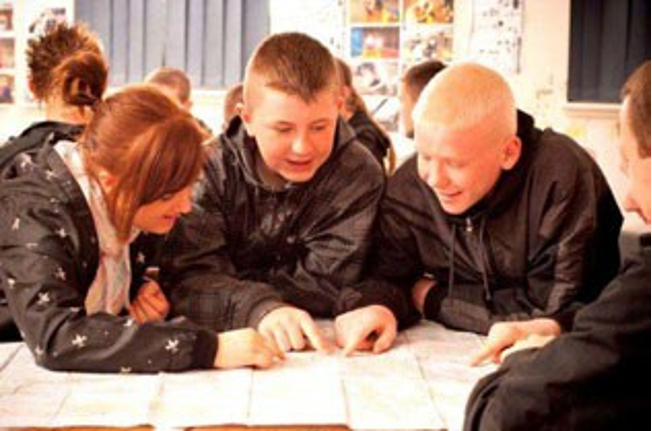
2. All-through schools: how good are we now?
In recent years, inspection findings in all-through schools have consistently identified the following strengths:
- climate and ethos, including the quality of relationships;
- partnerships with parents and the local community; and
- meeting the needs of young people with additional support needs.
In over one third of schools, HMI identified the quality of support for young people with additional needs as a key strength. The quality of the ethos was a key strength in around half of schools inspected. Staff are regularly commended for their care and consideration for young people.Inspection reports frequently note the very high quality of relationships embodying mutual respect between teachers and learners in all-through schools.
All-through schools build well on strong links with parents which may often have their roots in connections established in the early years and primary stages of children‟s education. In all-through schools these links can create contexts which enable very positive outcomes for learners.
In all-through schools, local partnerships can lead to curricula which contribute directly to their communities‟ wider social and cultural goals. For example, inspection reports note the steps taken in Shetland to maintain cultural traditions in music and in the islands‟ distinctive dialect. Young people have access to music tuition which carries on the local tradition of fiddle playing. They have frequentopportunities to write and speak in their own dialect as well as in standard English. Similarly, schools in the Highlands and Islands may make important contributions to maintaining and developing Gaelicculture, language and heritage.
A key priority, particularly in sparsely populated or relatively isolated areas of the country, is the issue of sustainability. Some all-through schools demonstrate strong practice in helping young people develop skills for learning, life and work which are contextualised within their own local area. Likeschools across Scotland, some all-through schools specifically develop their curriculum so that it relates directly to the local context and the needs of the local community. The rural settings of some all-through schools may mean an even greater emphasis on developing entrepreneurial and work-related skills in their young people which are specifically linked with their local context, for example, skills and experience in hospitality,boatbuilding or crofting. This is particularly important where those who remain are a relatively small proportion of the total school leaver population. However, responding to the employment, cultural or economic needs of the local community is not only a rural issue. Joint campuses and co-located schools in urban areas facilitate joint working among schools and other partners, and provide sharedapproaches to addressing local issues. Glasgow Gaelic School provides Gaelic-medium education in an all-through setting.
Sometimes, in particular rural and urban contexts, schools may feel it important to develop enterprising attitudes, work ethics and values among young people which are also attitudes and values essential to ensuring the sustainability of the local community. Developing and nurturing skills in personal effectiveness are important if we want young people to make positive choices about theirfuture lives.
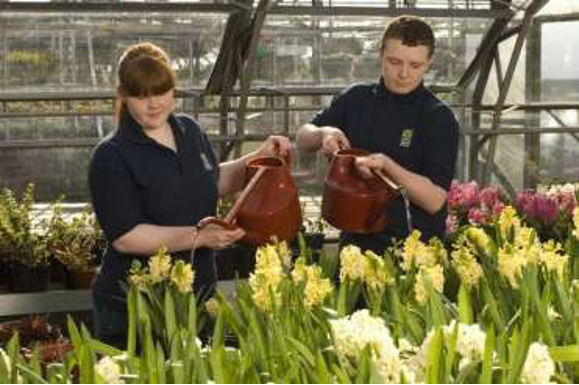
While it is important for all-through schools in rural locations to prepare their young people for living and working in the local area, it is equally important to prepare them for education and employment elsewhere. Young people across Scotland need “more choices and chances”, including those in more remote areas for whom “geographical exclusion” from educational and other opportunities can be a real risk. All young people need to develop generic skills which they can take anywhere in the world and use in whatever jobs and activities are available. Staff have important roles in developing and nurturing high aspirations among all young people. Living in a particular area of the country should not be seen as an obstacle to further study, employment or training or as implying that certain abilities, talents or skills are less important to the young people who live there than to young people in the rest of Scotland.
Young people will need a wide range of knowledge, skills and attributes in their daily lives and relationships which are valued by their families, communities, colleges, universities and employers, if they are to become successful, confident, responsible and effective adults who can meet the challenges of life and work in the 21st century.
Building the curriculum 4: skills for learning, skills for life and skills for work
All-through schools can provide examples of good and indeed, innovative practice in learning and teaching within the school-based curriculum which is of an equivalent quality to practice in separate primary and secondary schools. Teachers need to build on these strong foundations to provide further levels of challenge to learners within all-through schools. They can do this by drawing on the benefits of their all-
through context, for example, the opportunities for flexibility provided by their pattern of staffing, their shared accommodation and facilities and the availability of peer support across age and stage. In so doing, all-through schools can enhance the experiences of their learners significantly by providing the active, creative and flexible approaches to learning described within Curriculum for Excellence.
3. All-through schools: how good can we be?
One of the key issues in all-through schools is the extent to which the school community regards the school as one school rather than two schools under one roof. The challenge for school leaders, and for the headteacher in particular, is to have an accurate and detailed knowledge of the quality of educationacross all the stages and to set similarly high standards and expectations at every level. To do thissuccessfully, they must have a vision of the school as one school, a school at the heart of its community.
When developing the vision and values for your school, the following question should be at the heart of your discussions with young people, parents and members of the community.
What do we want young people in our community to know, and to be able to do?
Reflective questions about vision, values and aspirations
- What do we know of our young people‟s aspirations, and those of their parents and the community generally? How well matched are these aspirations to their progress, achievements and interests so far?
- To what extent do our vision and values communicate the concept of the school being at the heart of the community, and of learners developing their capacities in a broad community context and contributing to the sustainability of the local community? To what extent do they also relate to the need to extend learners‟ knowledge and understanding of the wider world beyond theircommunity?
- How do we ensure that any choices young people make about their future lives are based on a genuine understanding of the opportunities and challenges both within their own communities andwithin the wider world?
- To what extent does the vision for our all-through school embrace the needs and aspirations of learners at all stages? How successful are we at delivering this vision across all stages in the school?
- How do we recognise and celebrate the broader achievements of young people of all ages bothwithin and beyond the school?
These questions have implications for young people‟s expectations and achievements. All-through schools have traditionally demonstrated strengths in the outcomes they achieve for young people by the end of S4. The key issue is the extent to which these young people build effectively on this achievement by the end of S6, either in their own school or in the establishment in which they continue their education at S5/S6.
Many all-through schools are situated in centres of population that may be at a distance from the next destinations in young people‟s education, training or employment. All-through schools and their local communities need to consider how well they are helping young people to develop the resilience that will sustain them as they make transitions to the next stages of their learning and enable them to achievewell. Resilience has been defined as “the achievement of normal outcomes in difficult circumstances”.The Curriculum for Excellence experiences and outcomes relating to mental, emotional, social and physical wellbeing and planning for choices and changes are particularly relevant here. In all-throughschools there may be need for an increased focus on developing young people‟s awareness of therange of choices and routes of progression available to them throughout their broad general education.Such an awareness ensures they are well equipped for decisions about where and how they learn, andhow they can carry on their learning.
Reflective questions about resilience
- How well do we prepare our young people for important transitions in their learning at each of theall-through stages?
- In particular, how well do we support them in managing transitions in their senior years S4–S6?
- How successful are we at developing our young people‟s capacities to learn independently and effectively while they are still members of our learning community so that they are well prepared for the educational, personal and social challenges in their future lives?
All-through schools are well placed to support young people‟s learning in the context of Curriculum for Excellence. However, recent inspection reports note only a few instances where schools are exploiting their all-through context to the full and enabling young people to reap the benefits. There is scope for all-through schools to exploit more fully the flexibility afforded by their all-through educational provisionboth in planning the curriculum and in delivering learning. This should involve young people from different stages working together, including across the late primary and early secondary stages.Through shared contexts for learning, children and young people can make links between their learningin different areas of the curriculum, and build effectively on what they have already learned. The all-through context provides valuable opportunities for staff to develop innovative approaches to deliveringthe entitlements of a broad general education, responsive to their particular context, whether that be within a nursery/P1 to S2 school, a nursery/P1 to S4 school or a nursery/P1 to S6 school.
The key to ensuring smoother and more effective transitions for all learners from stage to stage of their learning lies in the extent to which teachers are aware of, and use all the available information about individual young people‟s progress to plan suitable next steps in learning. The Curriculum forExcellence: Strategic Vision and Key Principles highlights the importance of collaborative working especially at transitions.
The practices for arriving at a shared understanding of standards and expectations involve teachers:
- working together from the guidance provided to plan learning, teaching and assessment;
- building on existing standards and expectations;
- drawing on exemplification; and
- engaging with colleagues to share and confirm expectations.
Quality assurance and moderation have to strike the right balance between effort and sustainability by having approaches across 3 to 18 that are appropriate to the ages and stages of learners and are proportionate.
Curriculum for Excellence: Strategic Vision and Key Principles
Through participation in moderation activities, teams of teachers, and their partner providers, candevelop a shared understanding of standards and expectations across transitions, ensure these are applied consistently and plan effectively for progression and achievement. This shared understanding is particularly important in all-through schools which may have a large number of visiting specialistteachers and other providers. All-through schools also have the advantage, however, of having internal communities which are, by nature, cross-sectoral. By exploiting their distinctive opportunities for flexible deployment, they can develop creative learning communities, involving both teachers and learners, which are well placed to meet the particular needs of their young people. The all-through context also has the potential to stimulate the development of imaginative approaches which focus on achieving highlevels of success for all.

Reflective questions about curriculum and transitions
- How well are we using our all-through or co-located learning environment to ensure that accurate, timely, and suitably detailed information on young people‟s learning is exchangedamong staff at key points of transition?
- How successful are we at developing across our all-through school, as well as with other local schools, a shared understanding of standards and expectations of progression and achievement,especially at transitions?
- To what extent do we work together across the stages to plan the curriculum, identify and select resources and improve learning?
- How well do we use specialist accommodation and staff, including visiting staff, to extend youngpeople‟s learning experiences across the school?
- How well are we addressing any staffing challenges so that young people continue to receive their entitlements to a coherent curriculum with a broad general education and a senior phase?
- How flexible are our curricular provision and learning approaches in meeting the needs of all young people and providing them with the experiences and outcomes outlined in Curriculum for Excellence, despite small numbers at particular stages?
- How well do we work in partnership with local schools and other providers on developing our curriculum to ensure that all young people can progress in their learning?
- How much do we know about the range of opportunities for external recognition and accreditation of young people‟s achievements across the age range, and how well do we use them within theschool curriculum?
All-through schools need to ensure that in improving transitions within their own establishments, they do not neglect transitions with the other local primary schools from which young people transfer at S1.
All-through schools also need to consider the implications for transition, and plan to meet the learning needs of individual young people who may have moved into the area from elsewhere in Scotland, the UK or beyond. Some of these young people may have significant additional support needs, which require the provision and planning of specific resources. They may also be high attaining and/or have particular talents and abilities. As soon as any young people move into the local area, they rightly become the responsibility of the school in exactly the same way as if they had been born in the local area. They have entitlements to learning and support, and for their needs to be met appropriately. They may also need personal support in making the transition to a very different geographical, social and cultural context.
The principle of ensuring effective and smooth transitions also applies to progress in personal development. Ready for Life: education for personal and social development in primary schools7 identified a range of signposts to good practice in supporting young people‟s personal development which are as relevant to
all-through schools as to primary schools.
Reflective questions about developing mental, emotional, social and physical wellbeing
- To what extent is there coherence among programmes delivering the Curriculum for Excellence experiences and outcomes across all the stages of our all-through school, in particular those relatingto personal and social development (PSD)?
- How well do we use assessment and personal learning planning to support learning across the stages and to ensure that young people have a better understanding of what they are trying to achieve and what they need to do next in order to progress emotionally and socially, and to improvetheir skills in learning?
- How successful are we at engaging parents of children at all stages of the school, including those who are anxious, or reluctant to attend school events, in the school‟s PSD programme and theirchildren‟s progress?
- How good are we at drawing on the full range of young people‟s interests, skills, aptitudes and achievements, including those demonstrated out of school, to promote relevance in learning inPSD and across the curriculum?
- How well do we build on young people‟s experiences and achievements at the primary stages to ensure that their learning throughout their secondary education continues to be relevant and personalised, and fits them for life in the 21st century?
- How good are we at developing our young people‟s capacity to learn and live independently, both within our community and beyond, and their resilience in coping with challenges of differentkinds?
The emphasis within the Curriculum for Excellence on developing literacy, numeracy, and health and wellbeing holistically through the experiences and outcomes offers all-through schools opportunities to:
- kindle young people's aspirations to achieve ambitious personal goals;
- build their resilience; and
- develop their dispositions for lifelong learning.
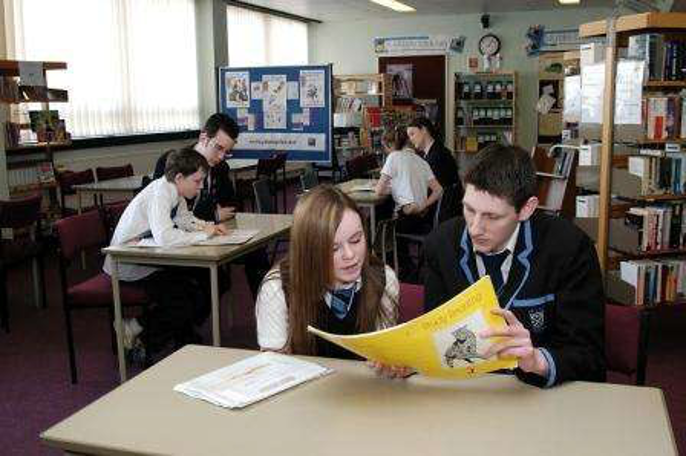
The environment for learning within all-through schools can provide a very positive and distinctive context for developing the capacities, attributes and capabilities of Curriculum for Excellence.Opportunities for collaborative activities across the stages and for taking responsibility for much younger pupils can help young people relate well to others from different age groups, learn to manage their own behaviour and recognise their own part in acting as role models. All-through schools have thepotential to become strong, nurturing and mutually supportive communities in which the qualities oftrust, empathy, support and resilience can develop and flourish.
Young people in all-through schools tend to “look out for‟ each other, and younger children observe patterns of behaviour and examples of academic, personal and social achievement to which they can aspire.
Reflective questions about goals and achievements
- How well do we support young people in setting and achieving goals at each stage of their learning, that will help them to realise their aspirations?
- How well do we use our all-through environment for learning to extend the learning of all young people, including those who are higher attaining, and those with particular skills and talents?
- How effectively do we build on young people’s learning across the range of contexts in the all-through school and its community so that they develop their awareness of their achievements and plan for progression?
- How successful are we at helping young people develop curiosity and openness to learning new things in new ways and in new surroundings, and demonstrate perseverance in the face of challenges?
- How much do we know about our young people’s successes in the settings to which they transfer when they leave our school? How well do we use this knowledge to improve practice within our own school?
4. Opening up learning in all-through schools
In the period from 2000 to 2009, fewer than half of all-through schools inspected were evaluated as good or better at using self-evaluation to improve outcomes for learners. The need to get better at using self-evaluation to improve the school has featured as a main point for action in around two-thirds of schools inspected. In Improving Scottish Education8, HMIE made the same point in relation to primary and secondary schools.
When groups of teachers get together to discuss how to improve learning for young people, the conversation often revolves around courses and programmes of work. For example, they might talk about structure and sequence, whether of topics or sections or modules, or the texts or worksheets used.
All of these considerations are very important. However, there is often less discussion about what learning is and how it takes place or, adopting the learner’s perspective, how learning can be organised for
the best possible outcomes – the professional craft of teaching.
In schools, you might sometimes hear people say, ‘that was a good
lesson’ or ‘that was a good activity’. How did they know? What did the learners think about that particular lesson? Are we sure it was a successful lesson from the learners’ point of view?
How good is our school? The Journey to Excellence Part 1
In all-through schools, as in all other schools, opening up learning requires teachers to refer to three key sources ofevidence
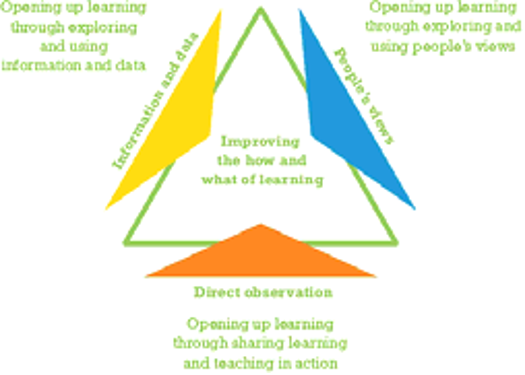
5. Opening up learning through exploring and using people’s views
What do young people think about learning in our all-through school?
Good Listeners – the Context: hearing the voices of children and young people9 reminds us of the importance of consultation and participation being meaningful and worthwhile. See page 9 for the „Ladder of Participation‟ which leads from „manipulation‟ to „engagement‟. The linked publication Good Listeners: hearing the voices of children in primary and special schools10 provides a number of examples of good practice which are immediately applicable to the all-through context.
The key phrase in the first three questions below is “about their learning”. Improving Scottish Education makes clear that while schools are increasingly seeking and taking account of young people‟s views, they have yet to engage them fully effectively in talking about what, how, and how well they are learning. It is also important for teachers in all-through schools to reflect on how effective these discussions are across all sectors of the school from the point where young people enter, until they leave. The questions below are designed to be used in conjunction with the questions in LTOUL Annex 2, page 56-57.
Reflective questions on exploring young people’s views
- How good are we at gathering our young people‟s views about their learning across all the stages inour all-through school?
- How effective are we at engaging young people in decision making at all stages within the school?
- How well do we take account of our young people‟s views about their learning in framing plans for improvement across the whole school and within nursery, primary and secondary departments?
- What has changed and improved in the continuum of our young people‟s learning as they progress through all the stages in the school? How do we know?
As well as seeking and acting on the views of young people, schools also need to be responsive to other groups which are important partners in the education of young people.
What do parents think about learning in our all-through school?
Inspection evidence indicates that the quality of links with parents and the wider community has been a longstanding strength of all-through schools. Nonetheless, schools need to build on these positive relationships to include parents more fully as active partners in their children’s education. They also need to ensure that parental views contribute to the school’s knowledge of itself and of how well it meets the needs of its young people and their parents and carers. In addition to the reflective questions in Annex 3 of LTOUL, staff should consider the extent to which they maintain and develop links established with parents at the nursery and primary stages as young people move into the secondary department.
The good practice below comes from a stand-alone pre-school centre.
Involving parents and young people in making decisions about learning
Staff evaluated their approaches to involving parents in the life of the centre. They set out to engage parents and young people much more in making decisions about what happens in the centre. Staff made innovative changes, including setting up a web forum for parents to talk directly with other parents. Parents and young people now take part in discussing changes in curriculum programmes, staff child interactions, and in designing spaces. Parents and young people have benefited through learning together, being more reflective and being able to ask questions about learning.
LTOUL page 20
Consider the extent to which your school has consistently supported parents in developing their understanding of young people‟s learning at all stages. The questions below are designed to be used in conjunction with the questions in LTOUL Annex 3, page 58.
Reflective questions on exploring parents’ views
- How might good practice similar to that in the pre-school centre above be extended into the primarydepartment of an all-through school?
- What issues might arise for both parents and staff as the practice extends into the secondary stages of the school? How would you deal constructively with these?
- To what extent are the views that parents offer informed by their understanding of young people‟s learning at each stage of their school experience? How do we use them to improve learning across theschool?
- How have we used our open evenings, curriculum events, information leaflets and/or the school websiteto develop their understanding of learning in an all-through context and raise aspirations?
What do staff think about learning in our all-through school?
In all-through schools, staff lead learning in a working environment that includes at least two stages of young people’s education, and very possibly three, from nursery through primary and into one or more stages of secondary. Teachers in all-through schools are therefore well placed to gain first hand knowledge of their learners‟ experiences throughout these stages. A key issue is how well informed teachers are about young people’s prior learning experiences, progress and achievements at all stages in the school. To achieve this understanding and develop the quality of education consistently across the school, teachers need to work together on the processes of self-evaluation and planning for improvement. Headteachers and promoted staff in particular need to develop a detailed awareness of the quality of education at all stages. To develop this awareness, they need to observe learning across all stages of the school. The questions below are designed to be used in conjunction with the questions in LTOUL Annex 4, page 59.
Reflective questions when considering how staff learn together
- To what extent do those of us who work mainly in the secondary department observe learning and/or engage in cooperative teaching in the primary department?
- To what extent do those of us who work mainly in the primary department observe learning and/or engage in cooperative teaching in the secondary department?
- To what extent do we provide opportunities for teachers across primary and secondary departments and those from other local schools to work together to ensure a coherent approach to planning learning,teaching and assessment and to share standards and expectations?
- What use have we made of our observations, through discussing them with peers and/or reflecting on our own practice? How has our practice changed as a result?
All teachers in all-through schools need a secure understanding of their school‟s curriculum from 3 to 18, and of the curriculum in other establishments to which their pupils may transfer at S2 or S4.Curriculum for Excellence defines the curriculum as the totality of experiences which are planned for each young person. The Getting it right for every child approach places increased emphasis on child-centred partnerships and collaborations. All-through schools often play a very important role within their communities and can build on their strengths in this regard.
What do our community partners think about learning in our all-through schools?
A wide range of adults may contribute to delivering the curriculum and supporting learners in all-through schools. Staff need to build on their community links, an area of strength in all-through schools.Such links can extend opportunities for young people to learn within and beyond the school. All contributors to a young person‟s education should be fully involved in self-evaluation for improvement, including staff from health and police services, other council services, colleges and other educational establishments, youth work and community learning and development services, voluntary organisations, businesses, and employers. In seeking the views of adults who contribute to young people‟s learning and personal development, school leaders should consider the extent and the effectiveness of consultation with partners in other agencies and services, as well as community organisations and employers. See LTOUL Annex 4 page 59.
Reflective question on community links
- How well does the school know its local community? How well does it work with the community to improve learning and enrich the curriculum for all young people from 3 to 18?
- To what extent has the school developed a shared understanding with community partners of standards and expectations across the stages, and of their own roles and responsibilities?
- What structures are in place to support partnership working? How can partnerships with outsideagencies and community organisations be improved?
- How effective are local networking arrangements? What arrangements are in place for effective jointpartnership planning and evaluation?
- How do local businesses contribute to young people‟s learning across the stages, and whatarrangements are in place to support this?
- How well does the school liaise with local college provision to ensure young people‟s needs are meteffectively?
6. Opening up learning through sharing learning and teaching in action
Learning Together: Opening Up Learning (LTOUL pages 30-41) offers advice on ways to organise and share findings of learning visits that will help staff build an accurate picture of their professional practice and its impact on their learners‟ experiences. Key features of effective practice are listedon page 38.
Given the professional isolation of teachers in many all-through schools, it is also important to recognise the place of the learning visit and its attendant discussion and reflection in helping teachers take on still more effectively their personal responsibility for planning how to meet their own development needs.
Annex 6 in LTOUL (page 61) provides questions for staff to reflect upon in the context of learning visits.Importantly, staff in all-through schools are well placed to develop their knowledge and understanding of their young people’s learning experience and their progress in learning through direct observation of learning at all stages of their development.
Reflective questions about learning
- To what extent do learning experiences build on prior learning? How well is assessment information used to help guide progression within stages and from stage to stage within our all-through school?
- To what extent do teaching approaches at all stages promote learner engagement and encourage individual learners to take responsibility for organising their learning with others, working collaboratively in groups and teams, and giving presentations to their peers acrossthe stages?
- How does our school ensure that such activities are progressive and provide young people with increasingly greater challenge as they progress through the school?
- How do secondary staff in our all-through school use learning visits at P6/P7 to observe how young people at this stage take responsibility for their own learning? How do they build on this knowledge to ensure suitable support and challenge in their S1 experience to meet the needs ofall learners effectively?
- To what extent are staff in all-through and co-located schools capitalising on their single-sitecontext for learning to improve outcomes for learners?
Staff in all-through schools are also well placed to develop whole-school approaches to planning for and organising learning in relation to the Curriculum for Excellence experiences and outcomes. For example, staff would benefit from working collegiately across the school and using findings from a learning visit or visits to explore expectations of what learners should know and be able to do at particular levels of Curriculum for Excellence. In relation to the literacy outcomes, for example, theycould consider issues such as the following.
- What, for example, might staff across the school expect an able learner to be able to do in presenting to his or her peers at, say, P5?
- What standards of literacy would be hallmarks of success in achieving outcome LIT 2-10a or LIT 3a?
“I am developing confidence when engaging with others within and beyond my place of learning. I can communicate in a clear expressive way and I am learning to select and organise resources independently.”
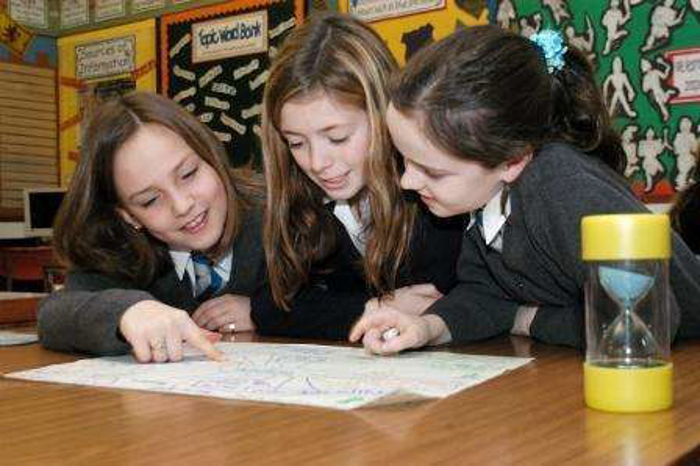
7. Opening up learning through exploring and using information and data
All-through schools must equip themselves to become as “data rich” as possible. They should gather and interpret data to help gauge their success in providing effectively for all their young people and tohelp each learner progress and achieve. See LTOUL pages 44-50.
In the introduction, this guide noted the context and composition of all-through schools across Scotland. All-through schools are not invariably small schools. However, many are, and for small schools data and its interpretation can require caution. Small numbers expressed as percentages can present pictures that may exaggerate strengths and minimise areas for improvement, or, indeed, vice versa. Variable numbers of young people presented in discrete subjects at the secondary stages may present some secondary departments with data which has, if not gaps, then very possibly data of doubtful statistical validity. The catchment area for the primary department may be different, or smaller, than the catchment area for the secondary department. Examination results at S5 and S5/S6 may include data from young people who have been at junior high schools, in addition to those who haveattended the S6 school throughout their school career.

However, having acknowledged these cautionary aspects of data gathering and interpretation given small pupil rolls, it is important to recognise that all-through schools, like all other schools, must take proper account of measurable information on performance. These measures include more than data on young people’s attainment in assessments and examinations. As elsewhere, they include datachecked against clearly-stated expectations of attendance, behaviour and punctuality and data onpost-school destinations and other measures. Whereas all-through schools will need to exercise caution in using national comparisons and comparisons with other schools, they are in an ideal position to track the progress and achievements of every one of their learners from entry in nursery/P1 until exit at S2, S4 or S6. This enables them to evaluate the value added by the school overall, and at different stages. Again, despite the same provisos, all-through schools can still focus on the extent to which there is evidence overall of improvement over time, while taking account of any discontinuities. P1 to S2 and P1 to S4 schools will also gain a great deal of useful information by working with their local S6 secondary school to track the performance of their learners following transfer, in order to identify aspects for improvement in the quality of education and support which they themselves provide. When evaluating the value they add to the achievements of their learners, S6 schools may find it helpful to look at the performance of young people who have joined their school from junior high schools separately from the performance of those who have attended their own school throughout their secondary school career.
All-through schools can also learn a great deal from using benchmarking information provided by their education authority, and by directly comparing their own practice and performance with that of other all-through schools operating in a similar context, which they have identified themselves.
Reflective questions on achievement
- To what extent are our approaches to assessment, feedback and next steps consistent across all stagesof the school, and sufficiently rigorous and robust to enable progress to be monitored at individual, classand stage levels?
- How good are we at identifying at an early stage those who require additional support with their learning, including those who are higher attaining, and ensuring they receive appropriate support at all stages inthe school?
- How effectively is data from assessments, both internal and external, transferred across stages within the school, and how well do we use this data to build on prior attainment?
- How much do we know about how well our learners achieve when they go to the S6 secondary school or to training or further study at college or university?
- How do we use this information to improve our curriculum, our learning and teaching approaches andour programme for personal and social development?
8. The way ahead
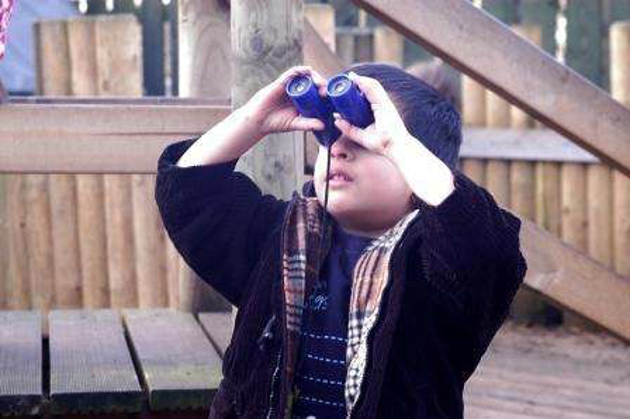
Bringing about improvements in learning is the core business of all-through schools, just as it is of all schools in Scotland, rural and urban, large and small, pre-school, primary or secondary.
All-through schools have significant advantages on which to build in meeting the learning needs of all the children and young people whom they serve. These advantages include positive relationships among members of the school community and strong links with parents and key community partners.Other benefits include the opportunities within all-through schools for cross-sectoral working to supportlearning, for flexibility in deploying staff and resources and for active and collaborative learningexperiences contextualised within the local community.
By building on these positive features, all-through schools, working with local authority officers andcommunity partners, are well placed to improve learners‟ experiences and outcomes. The following are priority areas for reflection, discussion, planning and action.
- The quality and nature of dialogue about learning among all practitioners within the all-through school community, and with parents and partners.
- The design of learning experiences which are imaginative and active and build on prior achievement.
- Transitions in learning between the various stages of schooling, and to positive destinations beyond school.
- Support for all young people in developing the resilience to make and sustain these transitions and achieve the best possible outcomes in the long term.
The aim of this guide has been to identify some of the key challenges and opportunities for all-through schools and the communities which they serve, and to stimulate professional reflection, dialogue and debate about improvements in practice and outcomes.
We hope that this professional sharing and dialogue will continue through networking among the all-through community, using technology such as GLOW. This short guide is just a start.
Acknowledgements
Her Majesty’s Inspectorate of Education (HMIE) Scotland
Schools included in the project:
N/A
AUTHORS
© Crown copyright 2010




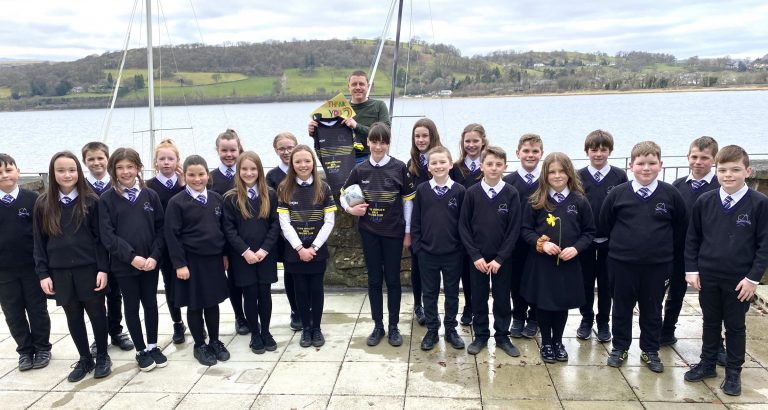
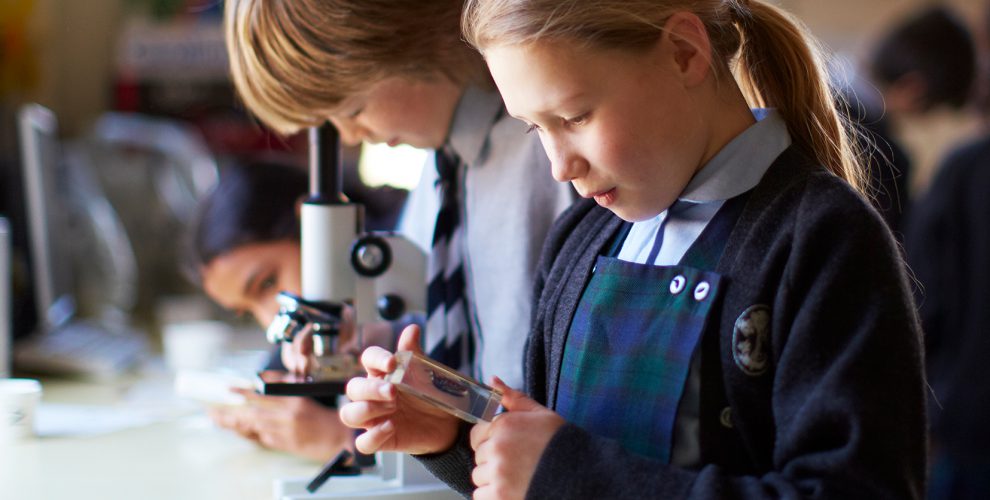




Leave a Reply